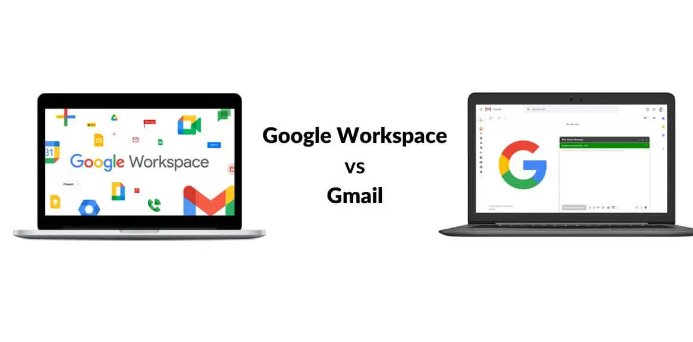Google Workspace vs Business Email ~ Effective conversations can make or break your business’s success. That’s where email communication helps you connect with clients, partners, and team members.
As a customer or a potential partner, the first thing that comes to mind when it comes to professional communication is email. That’s why choosing the right email solution is crucial to your business.
But when it comes to choosing the right email service for your business, the options can be overwhelming. Google Workspace and regular email hosting services are two popular contenders, each offering unique features and advantages.
In this article, we’ll dive into each of these email solutions and equip you with the knowledge to decide what’s best suited for your business needs.
Table of Contents
Google Workspace vs Business Email – Overview
Google Workspace (formerly G Suite):
- A collection of cloud-based productivity and collaboration tools developed by Google.
- Includes Gmail, Calendar, Drive, Docs, Sheets, Slides, Meet, Chat, and more.
- Designed for businesses of all sizes.

Traditional Business Email:
- Email services often provided by web hosting companies or specialized email hosting services.
- Typically includes email, calendar, and contacts features.
- Email services provided by hosting companies
Key Features Comparison
1. Email Service
- Google Workspace:
- Gmail with custom domain addresses (e.g., yourname@yourcompany.com).
- 30 GB to unlimited storage depending on the plan.
- Advanced spam and phishing protection.
- Integrated with Google Chat and Meet for easy communication.
- Traditional Business Email:
- Custom domain email addresses.
- Storage limits vary depending on the provider and plan.
- Varying levels of spam and phishing protection.
- Integration with other communication tools depends on the provider.
2. Productivity Tools
- Google Workspace:
- Google Docs, Sheets, and Slides for document creation and collaboration.
- Google Drive for cloud storage and file sharing.
- Google Calendar for scheduling.
- Google Meet for video conferencing.
- Google Chat for instant messaging.
- Traditional Business Email:
- May include basic productivity tools (calendar, contacts).
- Some providers offer integrated office suites (e.g., Zoho Office Suite).
- Integration with third-party tools (e.g., Microsoft Office, Slack) may be necessary.
3. Collaboration
- Google Workspace:
- Real-time collaboration on documents, spreadsheets, and presentations.
- Easy file sharing and permissions management within Google Drive.
- Integrated communication tools (Chat, Meet).
- Traditional Business Email:
- Collaboration features vary widely.
- Some offer real-time document collaboration, but often not as seamlessly integrated.
- File sharing usually involves attachments or external services.
4. Security
- Google Workspace:
- Advanced security features including 2-Step Verification, endpoint management, and security alerts.
- Compliance with various industry standards (e.g., GDPR, HIPAA).
- Traditional Business Email:
- Security features depend on the provider.
- Some offer robust security options (e.g., Microsoft Exchange with advanced threat protection).
- Compliance support varies.

5. Administration and Management
- Google Workspace:
- Centralized admin console for managing users, devices, and data.
- Easy to add or remove users and manage permissions.
- Detailed activity reports and security alerts.
- Traditional Business Email:
- Administration tools vary by provider.
- Management of users and permissions can be more complex.
- Reporting and alerting capabilities vary.
6. Integration
- Google Workspace:
- Seamless integration with other Google services (YouTube, Maps, Ads).
- Strong third-party app ecosystem through Google Workspace Marketplace.
- Traditional Business Email:
- Integration capabilities depend on the provider.
- May require third-party tools for full functionality.
7. Cost
- Google Workspace:
- Pricing plans range from $6 to $18 per user per month, with custom pricing for enterprise plans.
- Traditional Business Email:
- Pricing varies widely based on the provider and features.
- Some providers offer very basic plans at low cost, with more advanced features available at higher tiers.
Conclusion
Choosing between Google Workspace and traditional business email services depends on your business needs.
- Google Workspace is ideal for businesses looking for a comprehensive, integrated suite of productivity and collaboration tools, with strong security and easy administration.
- Traditional Business Email services may be suitable for businesses that require a simple email solution, have existing tools they prefer, or need specialized features offered by certain providers.
Both options have their merits, and the best choice will depend on your specific requirements, budget, and existing infrastructure.



